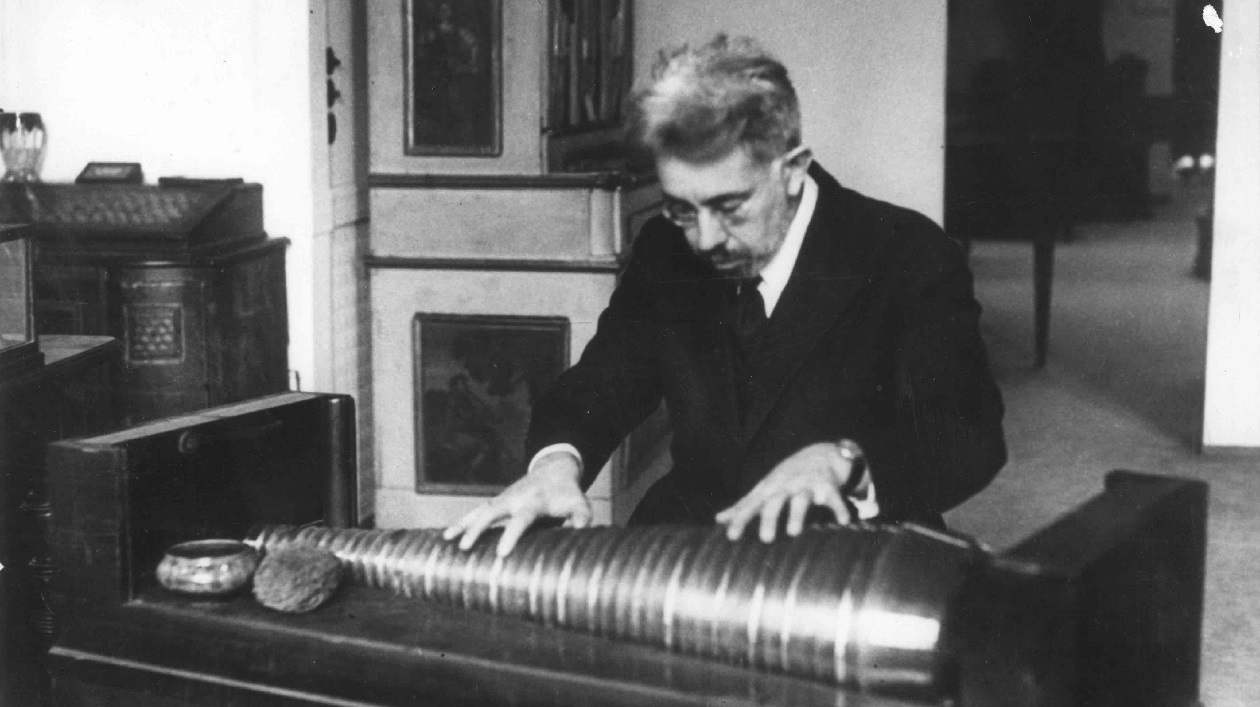Bereichsnavigation
History
The history of the Berlin Musikinstrumenten-Museum (Museum of Musical Instruments) dates back to 1888 when Philipp Spitta and Joseph Joachim founded the "Sammlung alter Musikinstrumente" (Collection of Old Musical Instruments) at the Königliche Akademische Hochschule (Royal Academy) in Berlin.

Thirty-four instruments from the Kunstgewerbemuseum (Museum of Decorative Arts), of which the greater part had once belonged to the holdings of the Preußische Kunstkammer (Prussian Art Chamber), formed the basis for the collection. Moreover, a further 240 instruments, acquired from the Leipzig publisher and music dealer Paul de Wit, were added to this. As early as 1890 an extensive collection of old musical instruments was bought from the holdings of Paul de Wit for the second time for Berlin. Included among these instruments was also the famous "Bach-harpsichord". Oskar Fleischer, the first director of the collection at the Königliche Akademische Hochschule, succeeded in making the most substantial acquisition for the Berlin Musikinstrumenten-Museum in 1902, when he was able to purchase the private collection of the Ghent lawyer César Snoeck, consisting of 1145 instruments, with financial assistance from the Prussian Royal family. The four Ruckers-harpsichords, built in the world-renowned workshop of the Ruckers family in Antwerp in the first half of the 17th century, as well as one of the few existing original transverse flutes by Jean Hotteterre, are shining examples of this collection.
Under the direction of Curt Sachs (Director of the Musikinstrumenten-Museum from 1919 to 1933) the first complete organological catalogue of the Berlin collection was published in 1922, which still forms the basis for numerous organological publications up to the present day. Curt Sachs was essentially responsible for giving our collection its scientific alignment and helped to provide it with international significance.
After Curt Sachs had been forced to emigrate by the National Socialists, the collection of musical instruments was removed from the Staatliche Hochschule für Musik (National Academy of Music) in 1935 and integrated into the Staatliches Institut für deutsche Musikforschung (National Institute for Music Research), whose other predecessor was the Fürstliche Institut für musikwissenschaftliche Forschung (Royal Institute for Musicological research) in Bückeburg. Up to the beginning of the Second World War the holdings of the Musikinstrumenten-Museum comprised around 4000 instruments.
After the end of the war only around 900 of these had survived. Alfred Berner (Director of the museum 1945–1975), who had also revived the Institut für Musikforschung in 1945 at the same time, was successful in building up the collection again, despite meagre financial resources, to become one of the most important international collections again and, at the same time, he established an extensive musicological library in which the main focus was on organology.
Since 1962 the Staatliches Institut für Musikforschung with the Musikinstrumenten-Museum has been one of the five institutions of the Stiftung Preußischer Kulturbesitz (Prussian Cultural Heritage Foundation). In 1984 the institute and the museum were able to move to the Kemperplatz, next to the Philharmonie, into their own building, constructed as part of the Kulturforum by Edgar Wisniewski according to the designs of Hans Scharoun. Around 900 of the approx. 3,600 instruments of the unique collection are presented to the public here in a spacious exhibition room flooded with light.
Special attention is devoted to professional conservation, restoration and the replication of valuable historical musical instruments. Thus, for example, two replicas of the famous "Bach-harpsichord", illustrating the different stages of construction of this instrument, can be viewed. The museum can also draw on an extensive archive of audio documents of its own instruments, as well as those of comparable instruments from other collections. Besides special exhibitions and lectures, numerous music events take place and transform the building into an "audio museum".

